Common Bacterial and Viral Diseases of Vegetables
Plant pathogenic bacteria and viruses can cause serious diseases that affect vegetables. These organisms cause different kinds of symptoms or injury to plants.
Learn more about the common bacterial and viral diseases of vegetables and get some tips that can help you prevent these diseases in your garden.
Bacterial Soft Rot
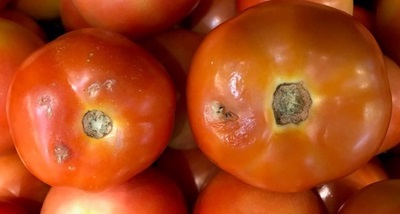
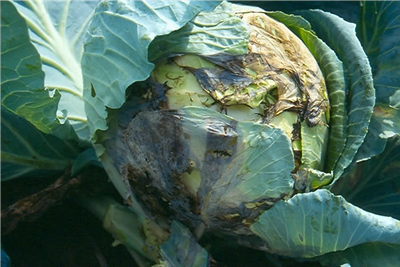
Bacterial soft rot attacks succulent plant parts such as the fruits, stems, bulbs and tubers. Soft rot commonly affects vegetables such as tomato, cucumber, squash, cabbage, bok choy and cauliflower.
Symptoms
Bacterial soft rot will develop as water-soaked spots and become enlarged and sunken with time. Infected tissue is often characterised by cream to black discolouration and a strong, decomposing odour.
Preventive and Control Measures
Avoid overwatering and overcrowding plants to manage soft rot. Remove and discard infected plants and plant parts, and do not bury or compost infected plants.
Bacterial Spots
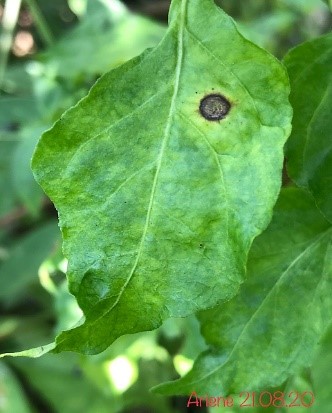
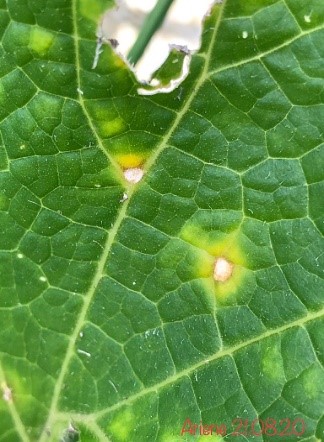
Bacterial leaf spots or bacterial spots is a common disease and may manifest in several ways as leaf spots, blights or circular scabs in vegetables. Tomato and pepper crops are primarily the main hosts of bacterial leaf spots. Cucurbits, lettuce, turnip and cabbage are also commonly affected.
Symptoms
Bacterial leaf spots initially appear as small, water-soaked spots and will eventually dry out as brown or black spots with yellowish halos. Lesions on the stem, rough spots or scalds on the fruit and the drop-off of leaves may also be observed.
Preventive and Control Measures
Scout and monitor early signs of infection and remove the infected plants. The bacteria causing leaf spots does not survive well in the soil but can persist on plant debris. Hence, do not compost infected plant debris. In addition, it is best not to save or use the seeds if you have problems with bacterial leaf spot on your tomato and pepper plants.
Black Rot


Black rot bacteria affect all members of crucifers such as cabbage, mustard, lettuce, kale, radish, broccoli and cauliflower. Infected seeds and infected transplants are the main sources of black rot disease.
Symptoms
Black rot begins with yellow, chlorotic blotches at the leaf margins and later turn into wedge- or V-shaped lesions. The blackening of stems and roots can also be observed as the disease progresses.
Preventive and Control Measures
Use certified-disease free cruciferous seeds and transplants. Prevent the overwatering of plants and avoid working with plants when they are wet. Promptly remove infected plants and disposed them immediately.
Bacterial Wilt Disease

Bacterial wilt disease affects tomato, eggplant, peppers and ginger. The bacterium enters the roots through wounds made at planting, or by nematodes and insects.
Symptoms
Wilt occurs on the youngest leaves and the whole plant can wilt suddenly and die. Brown stains on the stem and roots are seen when cut across, followed by the bacterial ooze exuding from the cut.
Preventive and Control Measures
If possible, do not plant in soil where bacterial wilt occurred previously. Use disease-free seeds or resistant varieties of seeds. Apply strict sanitation practices, such as to ensure irrigation of water, and transplants and tools are bacteria-free.
Cucumber Mosaic Virus Diseases

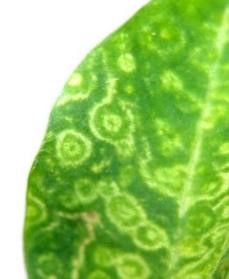
Cucumber mosaic disease is caused by plant pathogenic cucumovirus that is usually transmitted to plants by feeding vectors such as aphids. The virus was first found in cucumber and also infects squash, peppers, tomatoes, lettuce, spinach and beans.
Symptoms
The cucumber mosaic virus often causes mottled (irregular dark and light green patches), wrinkled and malformed leaves. Affected plants may also show stunting, yellowing, ringspot as well as flower and fruit deformation.
Preventive and Control Measures
Monitor and maintain aphid control. Also discard virus infected plants immediately to minimise the spread to healthy plants. Do disinfect tools used in propagation frequently.
Viral Diseases of Chilli

Chilli is susceptible to several plant parasitic viruses such as geminivirus, tobacco mosaic virus and tospovirus. These plant viruses are transmitted by whiteflies, thrips, aphids and plant hoppers.
Symptoms
Affected plants show stunted growth, leaf mottling with yellow green patches, leaf curling and leaf crinkling. On fruits, yellow, green and red blotches and concentric rings can develop. Young fruits are deformed and often drop from the plant.
Preventive and Control Measures
Ensure strict control of insect pests that harbours the plant viruses. Remove infected plants once detected to reduce the incidence and spread of the disease. Use resistant or tolerant plant varieties coupled with the removal of weeds and alternate host plants.
How to Manage Bacterial and Viral Diseases
There is no single cure once bacteria and viral diseases get hold of your plants. However, an Integrated Management approach is a key to preventing and minimising the spread of bacterial and virus diseases in your garden. A combination of diverse control methods such as exclusion, eradication and avoidance should be used in an integrated disease management.
Exclusion is the first line of defence
Use disease-free seeds, clean transplants and soil. When available, use resistant varieties and do disinfects all tools and machineries before and after use.
Eradication methods
Scout plants regularly and remove plants showing symptoms of infection. Remove weeds and dispose plant debris that can carry the disease. Do not bury or use infected plants for compost.
Avoidance Methods
Irrigate based on the water need. Avoid over irrigation and water splashes that may spread the bacteria. Do not work in your garden when it is wet.
If possible, practice crop rotation and raise seeds in an insect-proof nursery.
Ensure regular monitoring and control of insect vectors of insect pests.
Learn about various pests and diseases that may afflict your plants and how you can treat them, here.
Gardening with Edibles
The City in Nature vision seeks to bring greenery closer to all residents. The community plays a key role in the ownership and stewardship for nature which will benefit our health and well-being.
NParks is partnering residents to make Singapore our City in Nature and spark a love for community gardening through the Gardening with Edibles initiative launched in June 2020. Under this programme, some 400,000 free seed packets have been distributed to interested members of the public. Relevant resources are also available online, to guide gardeners along the way.
Also, NParks is expanding the allotment gardening scheme and the Community in Bloom programme, to welcome even more residents into the gardening family.
The Gardening with Edibles initiative is aligned with Singapore’s national strategy to strengthen our food resilience. The “30 by 30” goal, led by the Singapore Food Agency, aims to produce 30% of Singapore’s nutritional needs locally by the year 2030. The programme is jointly funded by founding partners DBS Bank and Tote Board through the Garden City Fund.
Gardeners’ Day Out Is Back!
Participate from the comfort of your home with online activities such as talks and demonstrations, video tutorials of activities and promotions offered. Free guided tours will also be offered on site (with safe management measures). Enjoy Gardeners’ Day Out online at www.nparks.gov.sg/GDO.
You can also enjoy our Gardening With Edibles Masterclass Series from your home. They are conducted by NParks horticulturists, focusing on unique and challenging edibles across different plant families.
CIB Awards 2021
The Community in Bloom (CIB) Awards recognises excellence in gardening efforts by community groups and aims to encourage community gardeners to improve the standards of their gardens while continuing to enjoy gardening as a fun and healthy activity.
This year, the CIB Award focuses on community gardens in schools and organisations, as well as a new category of indoor gardens. Click here for more information.
Learning More
If you are a gardening newbie, visit NParksSG, our refreshed YouTube Channel that serves as a one-stop repository for close to 300 video resources. It covers topics ranging from types of soil needed for your garden and how to plant, harvest and even cook your edibles.
How can you make your garden more welcoming to bees? Learn more here.
Keep your garden safe from attack by insect pests. Learn more about five such common pests of edible plants here.
How can you make your garden more welcoming to bees? Learn more here.
Learn more NParks’ Plant Health Services whose work helps keep Singapore safe from the incursion of exotic plant pests.
For more information about the flora and fauna found in Singapore, please visit Flora and Fauna Web.
If you like what you read, follow us on Facebook, Instagram and Telegram to get the latest updates.
Text from Plant Science and Health Branch


_jeanne-tan.jpg)


Have views or comments on this article? Let us know via this form. If you would like to give us feedback on any other areas relating to our parks and gardens, please submit via https://www.nparks.gov.sg/feedback